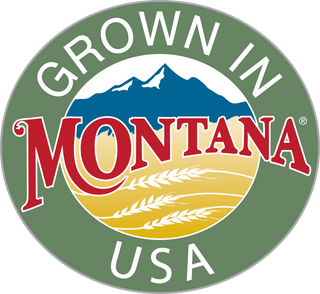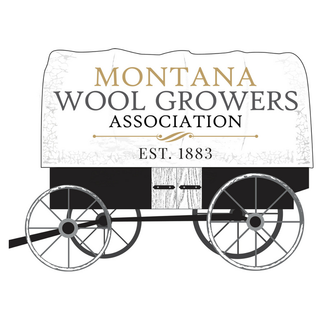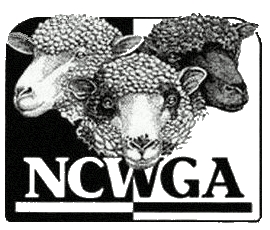
Our Story
We selected the name Steitzhof as a tribute to my father who introduced me and my sisters to raising a variety of livestock on the family farm. The suffix, hof, meaning ranch in German. Now later in life I have selected my favorite farm animal, best suited for our new venture, Merino sheep. The goal is to raise the finest specialty wool fleeces for the craft markets.
You Care and So We Care
- Choosing the best breading stock from across the country.
- We chose South Australian genetics because of the longer staple length, larger body, and big bold crimp,
- Through a specialized feeding plan, using grass pasture, local hay, and supplementing with GMO free grain specially mixed for our flock, our seep produce a long strong fiber,
- Our flock is fully jacketed to ensure the cleanest fleece possible.
- Each sheep is registered with the Natural Colored Wool Growers Association (NCWGA) and Montana Wool Growers (MWGA).
- We are a member of Grown in Montana program.
Stewardship
Building Fleece and Soil in Concert
Wool is a product of the sheep and the quality of that fiber
is a direct result of the health of those sheep. We are constantly evaluating
our feed plan to improve the benefits while weighing costs. Wool is essentially
a protein. We fiber test all of our sheep’s fiber annually with Montana Wool
Lab. We can clearly see how the changes in feed plan, whether it is grass,
grain, minerals, hay, stress…, alter the results. The more we learn the better
we can fine tune that feed plan for optimum health, lambs and fleeces. Our
guard dogs pretty much keep the stress level down. We also perform testing on
all the feed sources that we can. We supplement with a daily small ration of a
locally grown grain-based custom feed with added nutrients to keep that plan balanced
and functioning. The food plan includes hay which we must purchase locally to
supplement part of the year and be the predominant feed source in months of
snowpack. The cost of hay has doubled since 2020 and that is added incentive to
continue to build our soil.
When you buy a fleece, you buy a whole year of life and all
that went into it. When we started into our project of rebuilding the soil, in
addition to the sheep, we tested the soil and listened to neighbors and dove
into fertilizer and herbicides to feed the soil and kill the weeds. Those were the means I grew up with as an
N-P-K guy. It didn’t take long for us to realize that we made plants taller and
killed a lot of weeds but what also had we done? It was obvious in the first
couple years that we were feeding the plants, not the soil and we were killing
the vast community below the surface. It was in this period that we learned of
holistic or regenerative grazing , neither term we actually like. What we do
like is by spending zero dollars on fertilizer, herbicides or pesticides and
using our sheep to work for us in a managed grazing situation we could rebuild
that soil and retain more water. In a few years we increased our grazing by 30%
which equates to less hay purchased. Our
sheep made a huge positive impact on that soil but that property wasn’t large
enough and we sold it to start again from scratch 12 miles down the road.
It was a crazy jump to a larger property with less easy
grazing and zero fences but maybe we either like big challenges or bigger
opportunities. Carol and I built a mile of fence including entire perimeter in
about a month. The sheep had to be safe. By easy grazing I am talking about
open field grazing. But now we had shade we just needed to develop the grass. Most
of the land was rugged forest, overgrown pasture. The sheep adapted to the new
property with ease and the infrastructure came together. Regardless, the move, transition
and the set up was a costly, one-time impact.
That first spring, the snow melt off was scary as rivers of
water carrying our soil and nutrients left the property. Behind that
disappointment came growth and a lot of growth. The sheep were feeding the
soil, breaking the crust with their hooves and water began penetrating instead
of running away. Regenerative grazing is a process that takes time. Mostly time
to rest. We are very fortunate to have great neighbors that saw our sheep as an
opportunity for them. We responded first by enrolling in the Soil for Water
program of the NCAT. We wanted to learn as much as we could to do this even better.
We began moving the sheep each morning to a neighbor’s land for grazing and
returning each evening. This took all of our temporary E net fences to
accomplish. With the help of a grant from Flathead Conservation District we
bought enough 48” E net to set up a large perimeter and to divide into small
sections with windup electric polywire strands. We were feeding our sheep on
our neighbor’s land but in doing so we are rebuilding soil, mowing and fire
protection meanwhile we were able to give our pastures needed rest time to
build deeper rooted grasses.
The process is rather simple. We put our sheep in a small
area for 3-5 days. They eat the top half of the grass , trample the rest and
then they are moved to a new plot. Sheep much prefer the small diameter, leafy
portion of grass which really aides this process. That area is left to rest and
re grow. The trampled grass is not
wasted. It is part of the regrowth process building a deeper root mass and
supplying shade cover to the soil meaning more water is retained in the soil. Repeat.
Photosynthesis. The grass plants take in carbon dioxide to grow, nourished by
the soil community. The grass breathes out oxygen. The sheep eat the grass,
hooves imprinting and scratching the soil to accept more water and good dose of
nutrients including needed organic matter (carbon based compounds) to that soil
community. In that process the sheep grows physically and grows wool. Wool is
composed of 50% carbon. The sheep does exhale carbon dioxide that again is
essential to the grass growth. The overall process the grass feeds the sheep.
The sheep feed the soil and carbon is taken from the air and sequestered
in the plants, the soil and the sheep.
Essentially by grazing and moving we are mimicking the great ruminants (buffalo,
elk, deer..) that once roamed our prairies building top soil as they went. By
comparison, grasses sequester the most carbon, followed by brush and trees are
third. Have a thought about that process as you build your creation with wool.
You are doing more overall good than you knew or intended.
But that is not all, we have a long term project to build a
silvo pasture environment on a portion of our property. A grass floor already
exists. We thin the wooded portion by selecting the best trees to keep and
remove the trees that are crowding good ones and least desirable either by type
or structure. Each year the sheep graze, rough the soil, add nutrients and now
sunlit floor increases growth of both the trees and grasses. By increasing
grasses the forest floor holds more water. When do we graze these areas? When
shade is needed for the sheep. The sheep eat anything green and brush is
replaced with grasses. The process also is reducing forest fire risk. The soil
wins, the forest wins and the sheep win.
Winter feeding is not a time to forget about feeding the
soil. The sheep do the work here too. It’s all about where we feed them. Sure
it takes some effort to push or pull hay feeders around a pasture but it can be
done fairly easily and we do. In addition, all manure from the barn and
stationary feed locations is placed in the manure spreader and spread on the
pastures that we choose. There is a plan for everything. Everyday is new
opportunity to find a way to feed the soil better.
Hopefully now you can see that the health of our
sheep and the health of the soil are closely related. Our fiber is a direct
product of that shared health. I should add that as we have progressed on this
process we begin to see earthworms where we never did. We see dung beatles emerging
and burrowing into the soil with manure creating water seepages. We see meadow
birds where we rarely did. Spacing between grass bunches are filling in and the
grass is out competing weeds. The deer and the elk have been more frequent in
our improved forest. Hopefully we have given you opportunity to appreciate wool
even more. When you buy fleece you are contributing to a very good process. Not
all shepherds go to the lengths or methods we do, many do similar but
differently than we do but the foundation is the same. Building sheep, soil and
an entire biosphere in concert.








